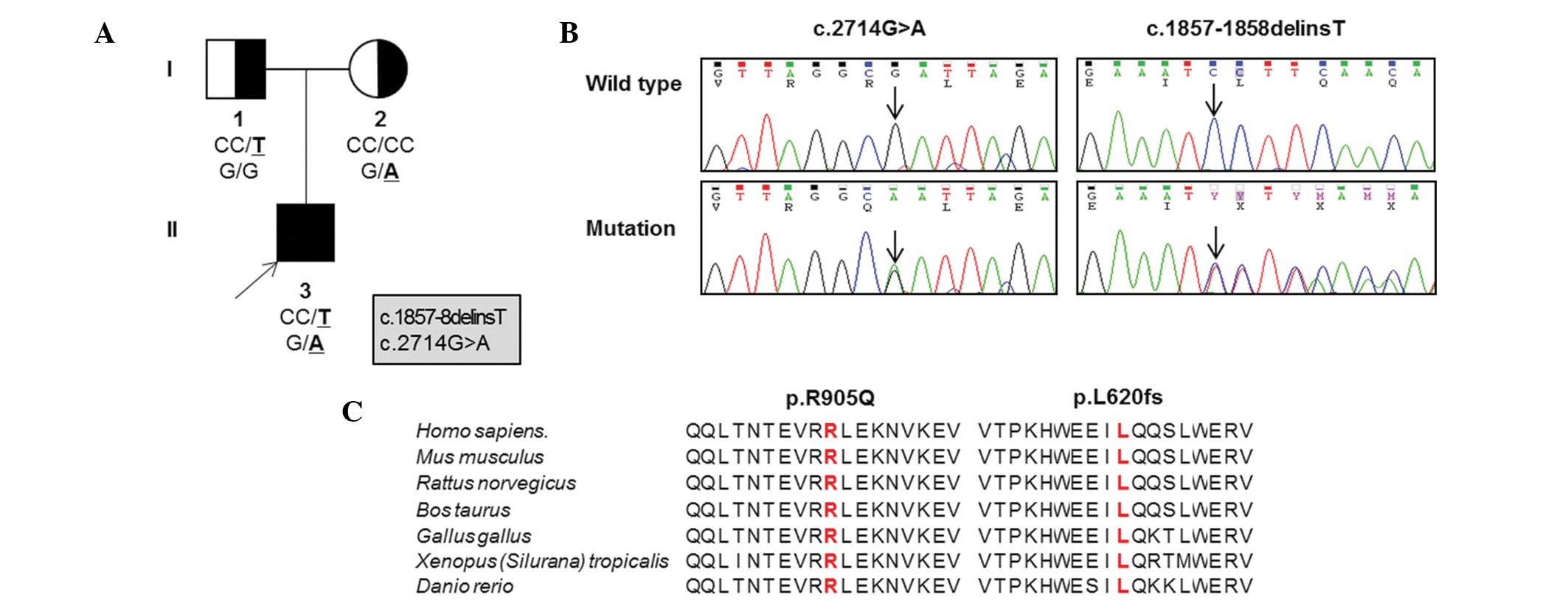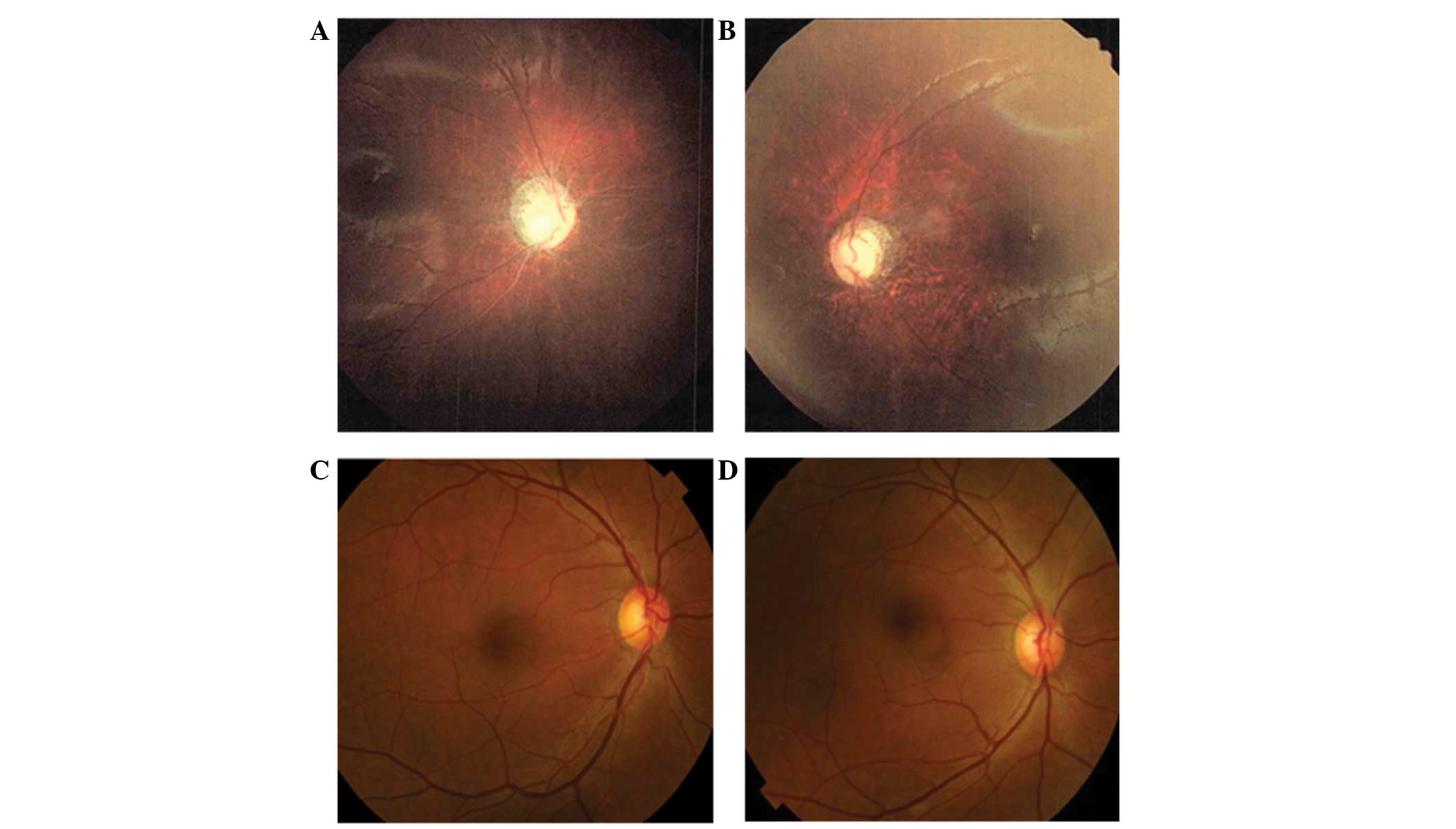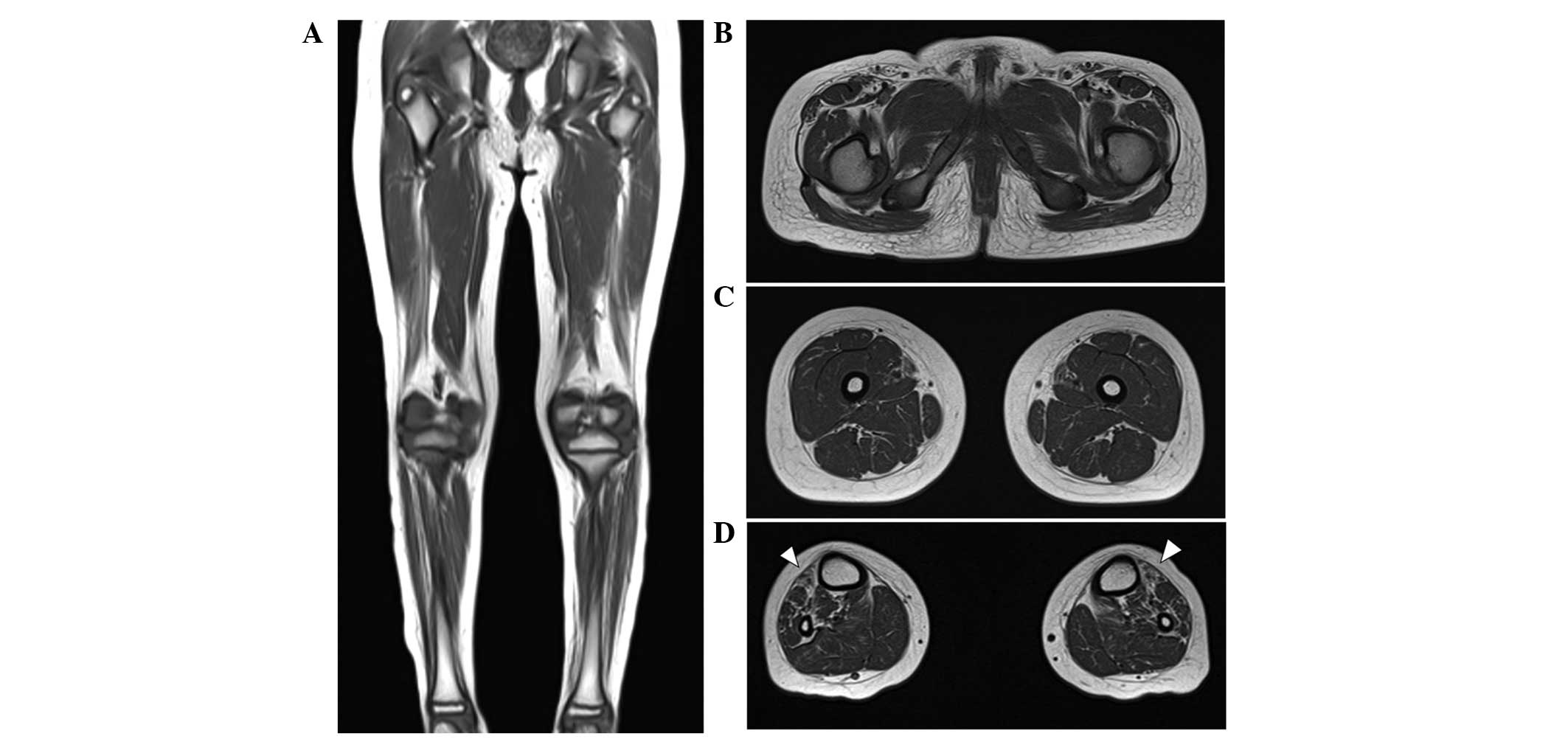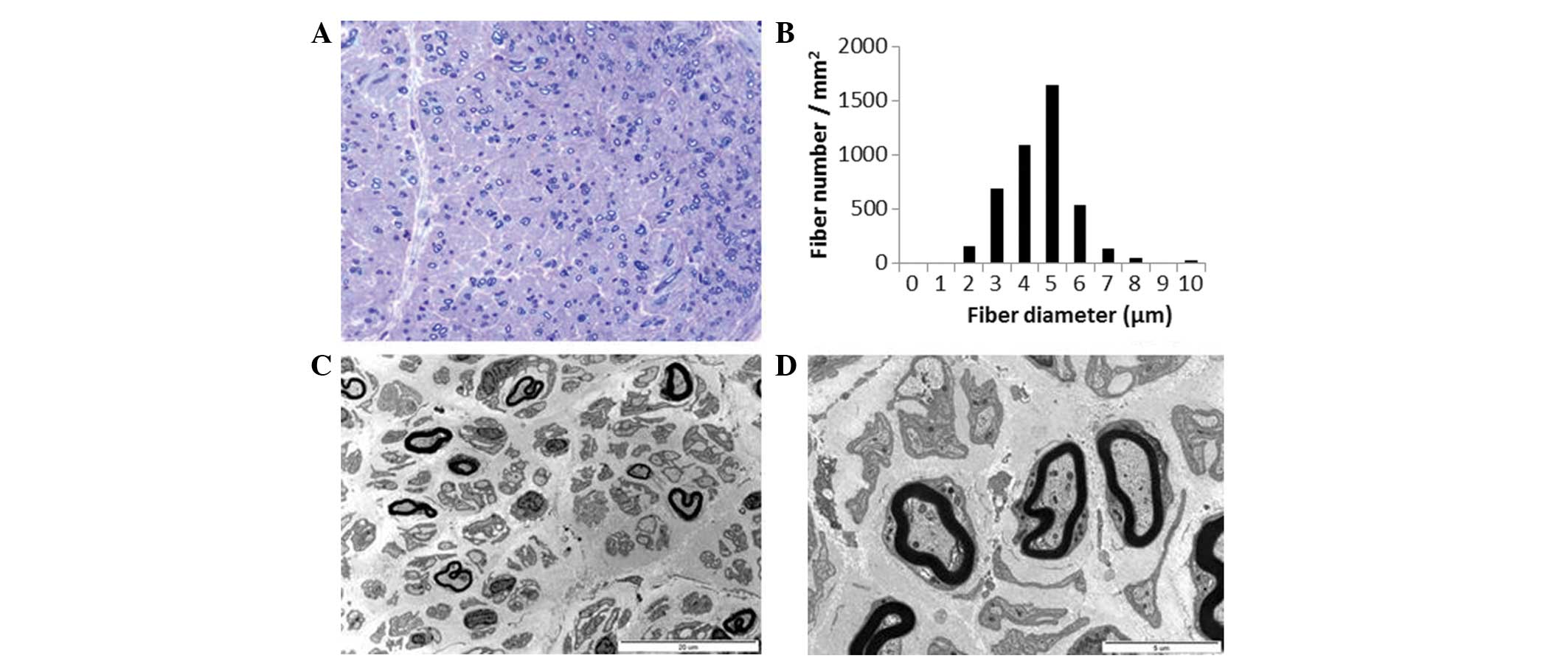Recessive optic atrophy, sensorimotor neuropathy and cataract associated with novel compound heterozygous mutations in OPA1
- Authors:
- Published online on: May 4, 2016 https://doi.org/10.3892/mmr.2016.5209
- Pages: 33-40
-
Copyright: © Lee et al. This is an open access article distributed under the terms of Creative Commons Attribution License.
Metrics: Total
Views: 0 (Spandidos Publications: | PMC Statistics: )
Total PDF Downloads: 0 (Spandidos Publications: | PMC Statistics: )
Abstract
Mutations in the optic atrophy 1 gene (OPA1) are associated with autosomal dominant optic atrophy and 20% of patients demonstrate extra-ocular manifestations. In addition to these autosomal dominant cases, only a few syndromic cases have been reported thus far with compound heterozygous OPA1 mutations, suggestive of either recessive or semi‑dominant patterns of inheritance. The majority of these patients were diagnosed with Behr syndrome, characterized by optic atrophy, ataxia and peripheral neuropathy. The present study describes a 10-year-old boy with Behr syndrome presenting with early‑onset severe optic atrophy, sensorimotor neuropathy, ataxia and congenital cataracts. He had optic atrophy and was declared legally blind at six years old. Electrophysiological, radiological, and histopathological findings were compatible with axonal sensorimotor polyneuropathy. At birth, he presented with a congenital cataract, which has not been previously described in patients with OPA1 mutations. Whole exome sequencing indicated a pair of novel compound heterozygous mutations: p.L620fs*13 (c.1857‑1858delinsT) and p.R905Q (c.G2714A). Neither mutation was observed in controls (n=300), and thus, they were predicted to be pathogenic by multiple in silico analyses. The mutation sites were highly conserved throughout different vertebrate species. The patients parents did not have any ophthalmic or neurologic symptoms and the results of electrophysiological studies were normal, suggestive of an autosomal recessive pattern of inheritance. The present study identified novel compound heterozygous OPA1 mutations in a patient with recessive optic atrophy, sensorimotor neuropathy and congenital cataracts, indicating an expansion of the clinical spectrum of pathologies associated with OPA1 mutations. Thus, OPA1 gene screening is advisable in the workup of patients with recessive optic atrophy, particularly with Behr syndrome and cataracts.













